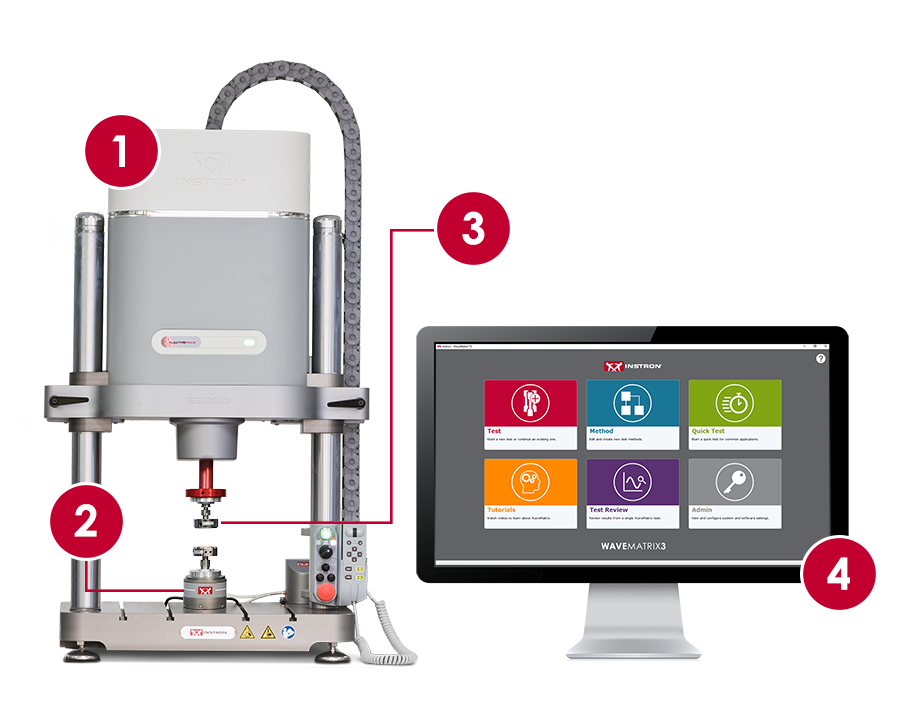ASTM D623 Rubber Compression Flexing Fatigue and Heat Generation
Dynacell疲労試験用ロードセル
2527シリーズロードセルは、動的試験機とともに使用するよう設計されています。読み値の0.5%の精度で荷重容量の1/250の荷重を測定する能力といった優れた性能を提供します。トランスデューサの自動認識と電気的校正により、使いやすくなっています。これらのロードセルは、荷重容量の150%までの荷重に耐えても損傷することがなく、300%までの荷重に耐えても機械的故障を起こしません。インストロンのロードセルはすべて個別に温度補償がされており、国際試験規格に対してトレーサブルな校正器による精度と再現性の試験が行われるので、測定の不確かさはロードセルの許容誤差の1/3以下になっています。
ElectroPuls®のカタログ
ElectroPuls試験機は、材料およびコンポーネントの動的試験および静的試験に使用する最先端の電気駆動式疲労試験機です。単相の主電源装置だけで作動するこの試験機は、最新の試験技術に加え、その他の便利な機能を数多く搭載しています。
WaveMatrix™3のカタログ
WaveMatrix3は、材料とコンポーネントの疲労試験および動的試験用に設計されたスマートなソフトウェアです。周期波形から複雑な多軸マルチステップ試験まで、あらゆる試験を1つのシンプルな静的ランプから実行できる柔軟性を提供します。テーブル形式の画面、明確なメニュー構造、時間ベースのマトリックス試験プレビュー、構成可能なライブ試験ワークスペースを統合した非常にビジュアルな環境は、直感的で、しかも安定性が得られるように設計されています。データ整理、組み込みのプロジェクト編成など、スマートな各種機能を搭載し、試験を簡素化するよう設計されています。

